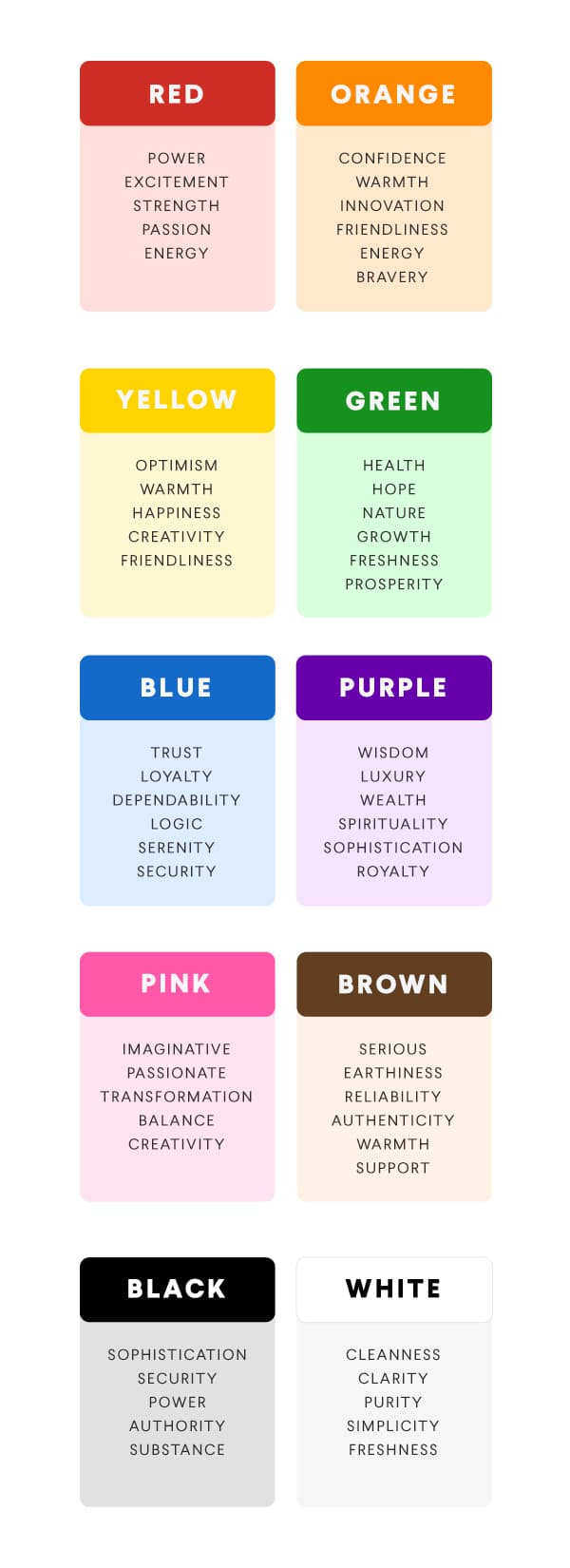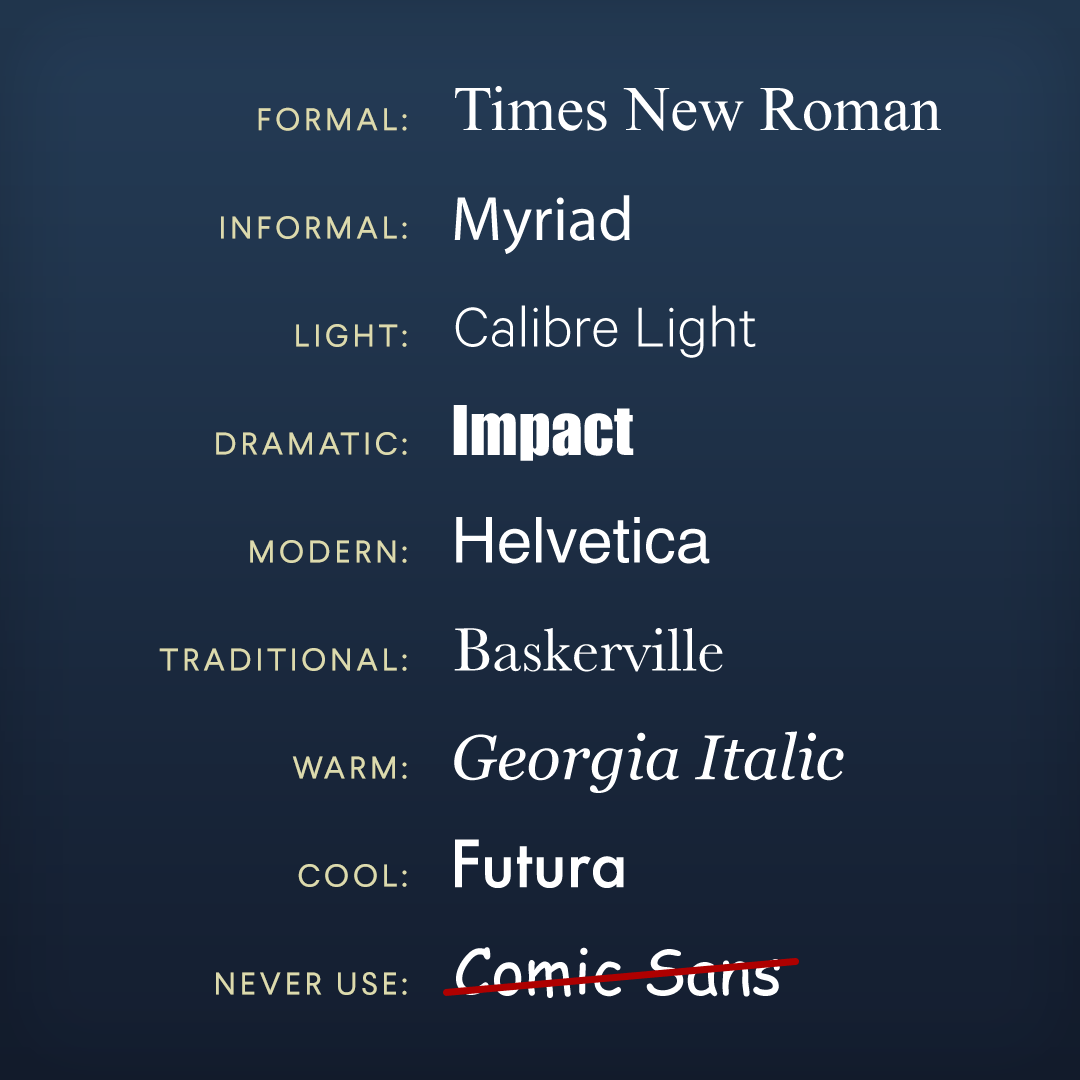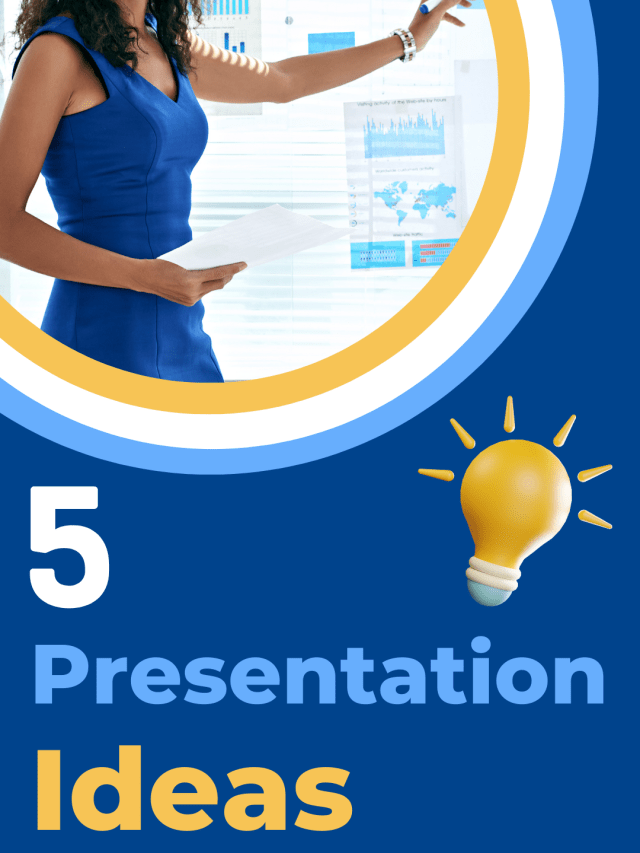Need a few presentation ideas to make your presentation great? A good presentation needs to be engaging, memorable, and impactful.
But how?!
Whether you’re speaking to 10 people or 10,000 people, you need to have sparks. Here are my 10 favorite presentation ideas you can try to level-up your presentation skills.
Use this step-by-step guide to get your message across clearly and confidently, with some presentation ideas you might not have heard before.
How to Prepare for a Presentation
Let’s start with your presentation preparation. Writing, brainstorming, researching, and organizing your presentation is key.
Save the best for last (and first)
The very first thing you should do when preparing for a presentation is to write down all of your ideas, points, examples, and case studies. I highly recommend using flashcards, but you also can use slides. Put one idea per slide or card. This will make it easy to move your presentation ideas around.
Next, you have to put your presentation ideas in the correct order. Many presenters make the mistake of going chronologically, burying their most important points in the middle of a presentation. This is a mistake!
Most of us remember the first and last parts of a presentation the most.
This is the serial-position effect– the tendency of people to remember the first and last items in a series the most clearly.
Presentation Mistake: Starting off with something too basic, such as background or foundational information, before you get into the heart of your presentation. A slow start means a bad first impression and a less memorable message overall.
A strong start and end has marked every important speech throughout history.
Here is Martin Luther King’s powerful opening line from his famous ‘I Have a Dream’ speech:
I am happy to join with you today in what will go down in history as the greatest demonstration for freedom in the history of our nation.
Here are the inspiring closing words of Malala Yousafzai’s address to the United Nations:
One child, one teacher, one pen, and one book can change the world. Education is the only solution. Education First.
How to start a presentation:
Always start a presentation with an interesting hook or captivating message. Look at all of your presentation ideas and pick out your strongest points. Here are some ideas on how to start your presentation:
- Do you have a sparkling one-liner or question to hook people in?
- Do you have a captivating story you can kick-off with?
- Can you make people laugh?
- Do you have an interesting fact that will make people curious about what you are going to say next?
How to end a presentation:
One of the best presentation ideas is to always end a presentation with the one take-away you want people to remember.
- What’s your big idea?
- What’s an action step you want your audience to take?
- What’s the most important point you want your audience to remember?
- Can you express gratitude to your audience?
Re-organize your cards so you start on a high and end on an important take-away. You will notice in my TEDx talk I start with an interesting, funny one-liner about myself and end with a powerful take-away and audience compliment:
Get even more public speaking tips with our related resources:
- How to Start a Speech: The Best (and Worst) Speech Openers
- 6 Public Speaking Apps to try Before Your Next Presentation
- My Top 5 Favorite Public Speakers
- 15 Science-Based Public Speaking Tips To Become a Master Speaker
- How to Give Captivating Presentations
- How to Give an Awesome Toast
Change Modalities
Studies by educational researchers suggest that up to 83 percent of human learning occurs visually, while the Social Science Research Network reports that 65 percent of people are visual learners.
Presentation Mistake: Delivering your entire presentation in one modality — all spoken, with very few visual or interactive elements.
People usually only retain 10 perecent of the information they receive in an oral presentation – when it’s just someone talking at them – but 65 percent from a presentation that includes visuals.
Think about how you can incorporate graphs, photographs, or illustrations as visual aids to demonstrate your point and support your main message.
Have you heard the cliche ‘Show, don’t tell’? Think about how you can illustrate some of your main points or ideas with different modalities. Every modality is a different way to explain your point. Modality ideas:
- How can you explain your concept with words?
- Is there a graphic that can help support your point?
- What visual would help someone understand your idea?
- Is there a video example you can show?
- Can you demo your concepts?
- Can you ask your audience members to try out, discuss, or brainstorm a concept from your presentation?
It’s also important to try to avoid putting huge chunks of unbroken text up on the screen like it’s a Star Wars prologue, or going through large portions of your presentation without refreshing your visuals.
Create Interactivity
One of the best ways to improve your presentation skills is involving your audience in interesting and unique ways. Most presenters think about the audience as listeners and forget they can be a critical part of your success as a presenter.
Presentation Mistake: Your audience members should not be passive listeners. They should be active partners in getting your message across.
It is estimated the average person’s attention span starts drifting within minutes of a presentation beginning The best way to keep your audience engaged is to involve them!
You can involve your audience in numerous ways. Here are a few ideas:
- Icebreakers. If you have a group that wants to get to know each other, or you want to loosen up your audience, try starting off with a non-awkward icebreaker.
- ‘Raise your hand’ questions. A great way to take the audience’s temperature is asking a simple yes or no question and having people raise their hands. This is a nice easy one for introverts because people can stay in their seats.
- ‘Table’ questions. If your participants are sitting at tables, or easily can get into small groups, assign a question or idea and have the small groups host discussions.
- Social media voting. You can ask people to hop onto a social media hashtag or use vote texting to poll the audience.
- Partner brainstorms. I frequently ask my audiences to partner up and discuss an idea, role play, or practice something. You also can assign a conversation starter to help people get to know each other.
- Role playing. If you need to demo something, consider having audience members come up to role play an idea.
- Question & answers. The simplest and most common kind of interaction is a simple question and answer session. These can be done during a presentation, after or before a break, or at the very end.
- Audience case studies. One great way to demonstrate a concept is having someone from the audience come up to be a case study. I sometimes do this during my body language presentations. I have someone come up to give their elevator pitch and we fix their body language so the group can see.
A great example of interactivity comes from game designer Jane McGonigal, who involves her audience in her new app by getting them to do some low-key aerobics at around 12:41 – 14:07 in her TED Talk.
The more fun and unique the interactivity, the better!
Get a public speaking role model
Sometimes it helps to look at other amazing presenters and learn from them. I constantly am looking for great public speakers.
I think everyone should have a public speaking role model. This is someone who speaks like you — with your energy, your pace, your desired presence. For example, I speak very conversationally, but also love quoting science. Brené Brown is one of my public speaking role models.
Here are 5 of my favorite public speakers who might inspire you as well:
How to Design Presentation Slides
Design really matters when it comes to a presentation. Think about your key message. — Are you empowering people to be more confident? Are you selling a fantastic new product? Are you pitching an idea to a panel of judges? Use your key message to guide your design decisions.
Get Creative with Color
How would you feel if your entire bedroom was painted luminous pink? Or if hospital gowns were black? It is likely these color choices would make you feel a bit uncomfortable. According to various studies, this is because people associate certain colors with certain environments and moods.
Incorporating this interesting aspect of psychology in your presentations can help express your message by using color as an emotional cue.
Presentation Mistake: Not aligning colors with your message.
Here is a simple breakdown of colors and their meanings:

Here are some ways you can use color in your presentation:
- Is your niche associated with a certain color scheme? For example, medical typically is associated with white (think white lab coat). The environment typically is associated with green. Can you match your industry OR do you want your product/idea/service to be associated with a certain industry? For example, if you are presenting on architecture and how you can be more green in your building materials, you can use green to subtly associate your content with the environment.
- Color intensity should match your energy. If you feel bold and strong, you should use bold and strong colors. Light or neutral colors are more muted and less intense. Use the color intensity to match your intensity.
- Use a color theory. If you really want to go crazy on color, I highly recommend diving into color strategy resources for how to choose colors that complement each other.
No matter what colors you use, be sure you are consistent! Unless your presentation is about rainbows — don’t use all the colors of the rainbow.
Fonts Matter
Just like colors, people also are influenced by typography. Consider how you want to come across to your audience, and choose a font based on this message.
A traditional serif font works great for authoritative presentations, such as pitches or presenting your findings from a scientific study at a conference. Typography is so influential to an audience that research suggests people are more likely to agree with sentences that are written in Baskerville.
On the other hand, an elegant script font is more friendly, which works best for more informal presentations.
No presentation can be improved by Comic Sans under any circumstances.

Think about how your message, tone, and theme could be improved by your font choices. Again, remember to be consistent – don’t change your fonts from slide to slide!
Get an App
All kinds of apps can help you prep for your presentation. From practicing to tempo to getting rid of “ums”.
Here are 6 of my favorite public speaking apps:
How to Deliver with Exceptional Presentation Skills
So, you’ve written the perfect talk and designed your slides magnificently. Now comes the tricky bit – actually standing in front of an audience, and delivering your presentation. Here are some of the best ways to make sure it goes without a hitch.
Don’t Over Rehearse
When you’re anxious about a presentation, it can be tempting to just read a script, memorize your lines, and get off stage as soon as possible. However, this can kill your vocal charisma! Monotonous speaking is one of the fastest ways to disengage your audience. The best way to keep someone listening is by using vocal variety.
A study analyzing 100,000 presentations revealed that just a 10 percent increase in vocal variety can greatly impact your audience’s attention!
Presentation Mistake: We are very good at vocal variety in conversation, but once we hit the stage we can sometimes over formalize our speech or sound too rehearsed.
How can you add vocal variety? Try these ideas:
- As you practice your presentation, experiment with pitch, volume, and speed. Try including some dramatic pauses, or slowing down the most important messages and emphasizing the key words.
- Warm-up your voice with some of my favorite vocal warm-ups:
- One of the best ways to do this is to inject emotion into your presentation. Studies have shown that emotions capture an audience’s attention. Reflect the emotions of your story by using pitch, volume, and speed to express yourself.
- A great way you can try for vocal variety is pretending you are speaking to an old friend. It’s as if you are having a conversation from the stage.
Quantum physicist Professor Jim Al-Khalili is an incredible example of an animated and energetic presenter. Between 2:12 and 3:15, he speeds up with excitement and enthusiasm when he talks about the importance of artificial intelligence. Then slows to a more considered pace to drive home his main message in the sentences following.
Work the Stage
Most presenters completely forget about the stage or the space where they present. Use of space can be a great and unique way to emphasize parts of your presentation.
Most people don’t realize that the way we command our use of space can signal our perceptions and mindsets.
If you command your stage, it looks like you have command of your material.
Our use of space and contexts is often a reflection of our inner thoughts and moods. And this is directly related to the audience’s perception of how well you know your content. Even if you know your content well, if you don’t know how to use the space, this can signal low competence or low confidence in your work.
For example, if a speaker enters the stage, goes behind the podium and stands small and tight, this can signal to the audience that the speaker thinks or feels nervous or closed-off. On the other hand, if a speaker enters the stage with no notes, open body language and works the entire space, it signals to the viewer that this speaker feels comfortable and this translates to comfort with the content.
In People School I offer a full tutorial of how to work a stage. See a sneak preview here:
End With an Exhale
This might seem like a silly presentation trick, but it is a tiny cue that goes a long way.
The exhale.
When we exhale it does three important things:
- It forces us to pause, which creates drama and helps us add more vocal variety when we continue.
- It encourages us to breathe and brings in more oxygen, which helps us think and speak more clearly.
- It relaxes our vocal chords so we can speak with more resonance.
When it comes to presentations most people think about what they want to deliver, not how they want to deliver it. How you deliver your message is just as important.
It’s important for you to find your maximum resonance point. Here is a full tutorial:
Harnessing the power of the exhale is also a great way to stop yourself from peppering your presentation with ‘um’ and ‘er’. It takes some practice, but if you can end your sentences on a complete exhalation, it will stop you from rambling.
The exhale also creates a natural pause for you to gather your next thought. It might sound difficult, but you can practice the exhale by reading out loud and paying attention to your breathing. Print out a script of your speech and add a highlight when you want to take a large exhale.
Bonus: 15 Science-Backed Presentation Skills
These presentation ideas will help make your presentation great — but they are just the start. Read our full guide for 15 science-backed public speaking tips to really be an expert-level speaker.
With these tips in mind, take another look at your presentation. Identify the weakest points, practice until it feels natural, and make these habits second nature. Every time you do your presentation, you will feel stronger and more confident.
You got this!









